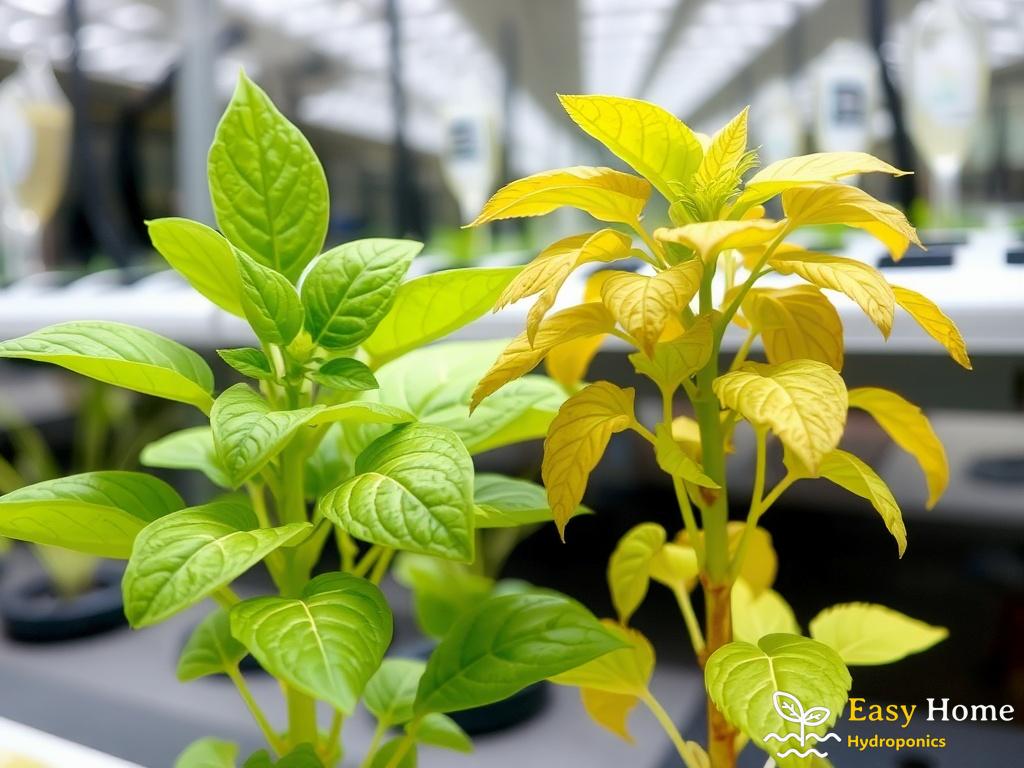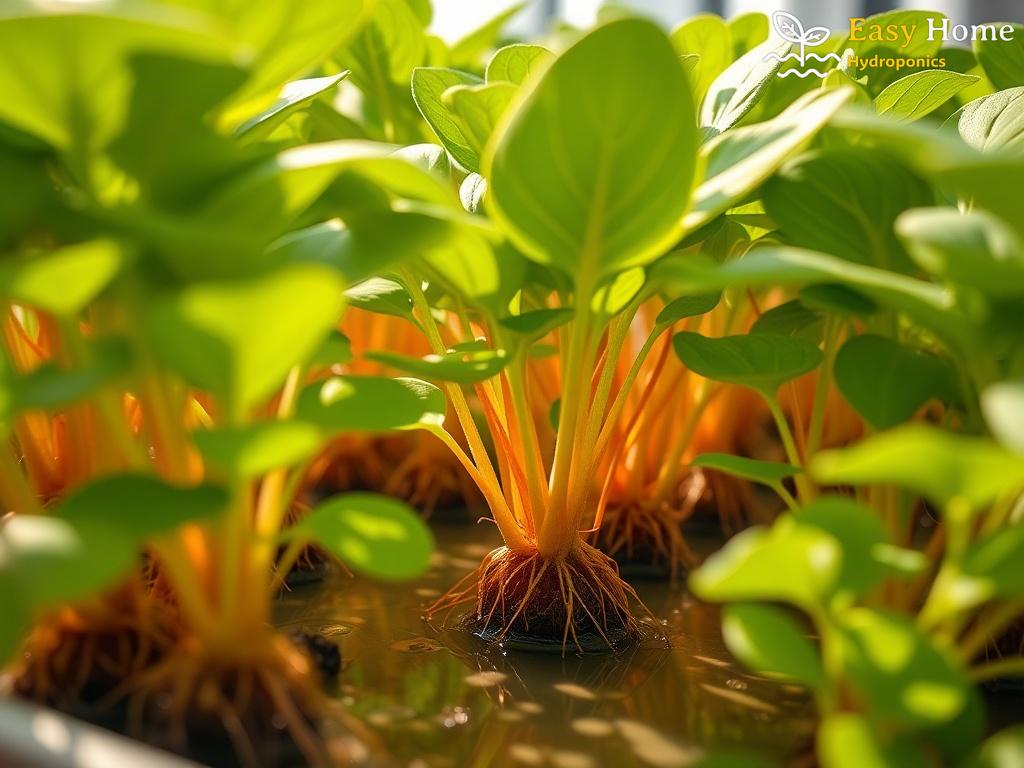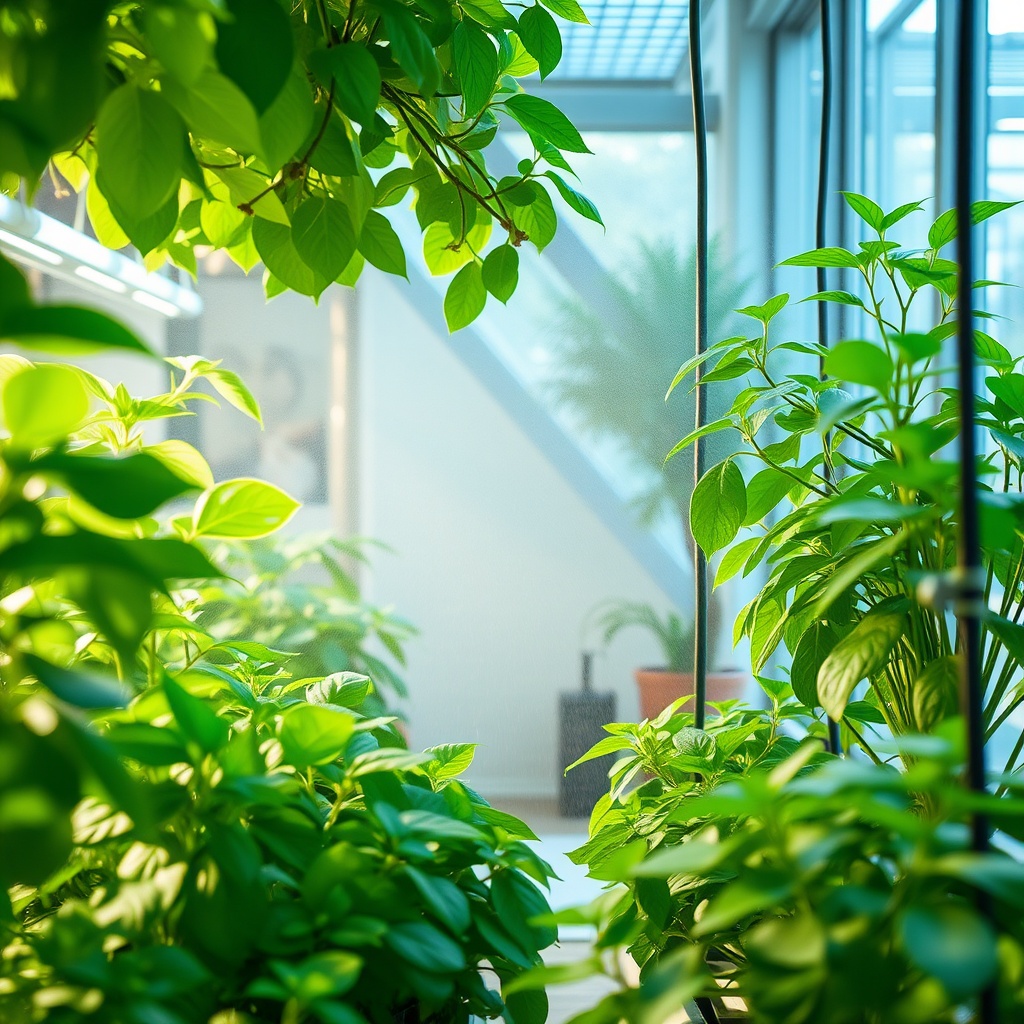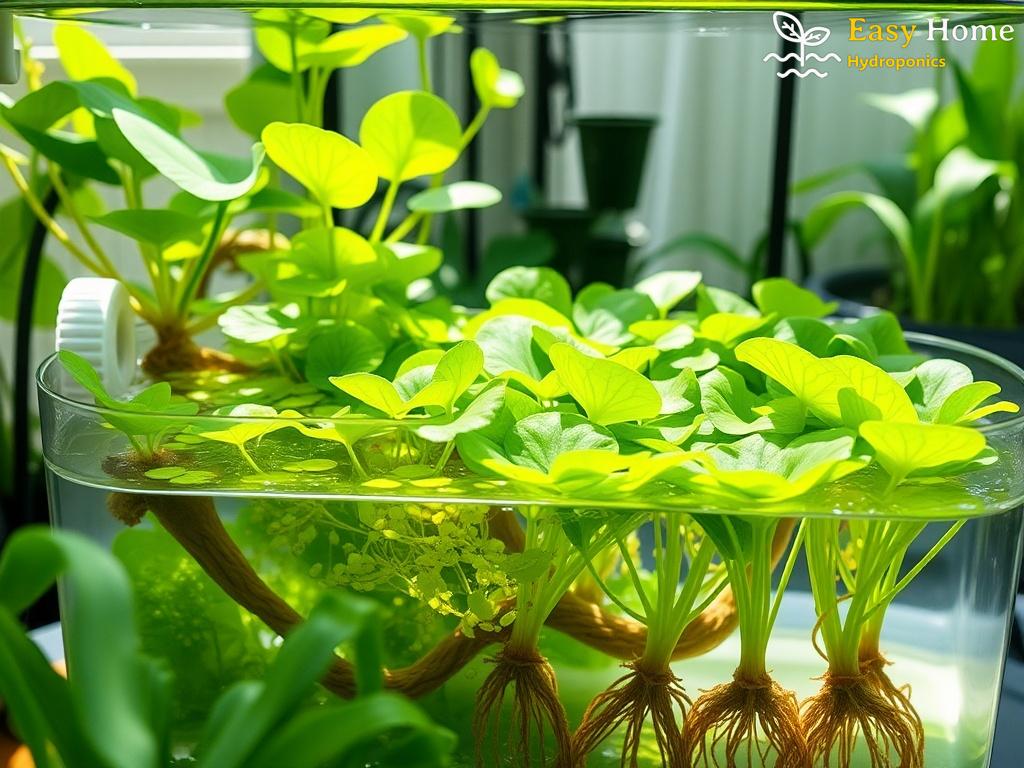Molybdenum Magic: Why It’s Essential for Plant Growth
Unlocking the Power of Molybdenum
In the vast world of plant nutrition, certain nutrients often steal the spotlight while others linger in the background, waiting for their moment to shine. One such nutrient is molybdenum, a trace element that plays a pivotal role in the health and growth of plants. While growers often focus on macronutrients like nitrogen, phosphorus, and potassium, molybdenum is the quiet hero that deserves much more attention. Let’s delve into the fascinating world of molybdenum and discover why it is essential for thriving hydroponic gardens.
The Role of Molybdenum in Plant Health
Molybdenum serves as a crucial cofactor for several enzymes involved in critical metabolic processes. Notably, it helps in the conversion of nitrate into ammonium, which is vital for protein synthesis. This process is particularly important in hydroponic systems, where nutrient availability can be tightly controlled. Without sufficient molybdenum, plants may struggle to utilize nitrogen effectively, leading to stunted growth and poor yields.
Key Functions of Molybdenum:
- Facilitates nitrogen fixation in legumes.
- Enhances enzyme activity for nutrient uptake.
- Prevents nutrient deficiencies that hinder growth.
Understanding Molybdenum Deficiency
Despite its importance, molybdenum deficiency can easily go unnoticed, especially in home hydroponics. Symptoms of deficiency often manifest as yellowing leaves and stunted growth, resembling other nutrient deficiencies. However, understanding how to identify and rectify these symptoms can make a world of difference in your plants’ health. Here’s a quick comparison of symptoms:
| Symptom | Molybdenum Deficiency | Other Nutrient Deficiencies |
|---|---|---|
| Leaf Color | Yellowing, especially in older leaves | Yellowing, but may affect younger leaves |
| Growth | Stunted growth and poor yield | Stunted growth, but may include wilting |
| Overall Health | Weak plants prone to disease | Weakness may vary depending on nutrient |
By understanding these symptoms and their implications, hydroponic growers can take proactive steps to ensure their plants receive the molybdenum they need. Remember, a little molybdenum can go a long way in maintaining vibrant and healthy plants!
Signs of Molybdenum Deficiency: What to Look For

Identifying the Subtle Signs of Molybdenum Deficiency
In the hustle and bustle of maintaining a thriving hydroponic garden, it’s easy to overlook the less prominent nutrients that play a vital role in plant health. Molybdenum deficiency can quietly creep in, masquerading as other nutrient deficiencies, making it crucial for growers to be vigilant. Recognizing the signs early can be the difference between a flourishing garden and one that struggles to meet its potential.
One of the first symptoms of molybdenum deficiency is the appearance of yellowing leaves, particularly in the older foliage. This yellowing is often mistaken for nitrogen deficiency, leading many growers to apply more nitrogen without addressing the underlying issue. In contrast to nitrogen deficiency, where younger leaves are affected first, molybdenum deficiency predominantly targets older leaves. As you monitor your plants, pay close attention to these color changes, as they can signal a need for intervention.
The Effects on Growth and Yield
Another critical sign of molybdenum deficiency is stunted growth. When plants lack this essential nutrient, their ability to convert nitrates into ammonium is severely impaired, leading to decreased protein synthesis. The result? A noticeable slowdown in growth and reduced yield. For hydroponic growers, this translates to fewer fruits or flowers, which can be disheartening after investing so much time and effort.
Moreover, plants suffering from molybdenum deficiency may exhibit overall poor health. These weak specimens become more susceptible to diseases and pests, further complicating the grower’s efforts. Identifying these signs early allows for prompt corrective measures, ensuring your plants bounce back to their vibrant selves.
| Symptom | Molybdenum Deficiency | Nitrogen Deficiency |
|---|---|---|
| Leaf Color | Yellowing in older leaves | Yellowing in younger leaves |
| Growth | Stunted growth and poor yield | Stunted growth with potential wilting |
| Overall Health | Weak plants prone to disease | Weakness varies depending on nutrient |
Understanding these signs and acting quickly can transform the health of your hydroponic garden. By ensuring that molybdenum levels are adequate, you can foster not only resilient plants but also maximize your yield, proving that sometimes the smallest nutrients can have the most significant impact.
Incorporating Molybdenum in Hydroponics: Best Practices
As hydroponic enthusiasts strive to cultivate the healthiest and most productive plants, the focus often remains on the more prominent macronutrients. However, the significance of molybdenum cannot be overstated. This trace element is crucial for ensuring that plants can efficiently utilize nitrogen, which is essential for robust growth and bountiful yields. Understanding how to incorporate molybdenum into your hydroponic system can lead to remarkable improvements in plant health and productivity.
Understanding Molybdenum Sources
When considering molybdenum supplementation, it’s essential to understand where this nutrient can be sourced. Molybdenum is typically available in various forms such as molybdenum trioxide and sodium molybdate. These compounds can be easily dissolved in water, making them suitable for hydroponic systems. However, it’s crucial to ensure that you are using the correct dosage, as too much molybdenum can be detrimental to plant health.
Optimal Application Techniques
Effectively incorporating molybdenum into your hydroponics setup requires precision and timing. Here are some best practices to consider for optimal results:
- Test Your Water: Before adding molybdenum to your nutrient solution, conduct regular water tests to determine existing nutrient levels and pH balance. This helps prevent over-fertilization.
- Timing is Key: Introduce molybdenum during the vegetative stage of growth when plants are actively absorbing nitrogen. This timing enhances the nutrient’s effectiveness and ensures plants can synthesize proteins efficiently.
- Monitor Symptoms: Keep a close eye on your plants for signs of molybdenum deficiency, such as yellowing in older leaves. Quick adjustments can make a significant difference in plant recovery.
Finding the Right Balance
Incorporating molybdenum into your hydroponic feeding regimen is not just about adding more nutrients; it’s about finding the right balance. Molybdenum works synergistically with other nutrients, particularly nitrogen. By ensuring that your plants receive a well-rounded nutrient profile, you can foster an environment where molybdenum can thrive. Regularly assessing the nutrient composition of your solution will help maintain this balance and promote optimal plant growth.
The Role of Molybdenum in Nutrient Cycling
In the intricate web of hydroponic gardening, every nutrient plays a unique role, contributing to the overall harmony of plant health. Molybdenum, often underestimated, is a silent player in nutrient cycling that deserves the spotlight. Its function is not merely to support plant growth but to facilitate the complex processes that ensure nutrients are effectively used and recycled within the system. Understanding how molybdenum contributes to nutrient cycling can elevate your hydroponic game, leading to lush, vibrant plants and bountiful harvests.
The Catalyst for Nutrient Conversion
Molybdenum acts as a critical catalyst in the conversion of nitrates into ammonium, a process essential for protein synthesis in plants. This conversion is particularly vital in hydroponic environments where nutrient levels can fluctuate. Without molybdenum, plants may struggle to assimilate nitrogen, leading to a cascade of nutrient imbalances. In essence, molybdenum helps to unlock the potential of nitrogen, ensuring that it is available for plant uptake, rather than remaining locked in an unusable form.
Enhancing Microbial Activity
Beyond its direct role in nutrient conversion, molybdenum also enhances the activity of beneficial microbes in the hydroponic system. These microbes are instrumental in breaking down organic matter and cycling nutrients back into the system. Molybdenum supports the enzymes that these microbes produce, thereby promoting a healthier microbial community. A thriving microbial ecosystem not only improves nutrient availability but also contributes to the overall resilience of the hydroponic garden.
The Molybdenum-Micronutrient Connection
Interestingly, molybdenum does not work in isolation; it has synergistic relationships with other micronutrients. When combined with elements like zinc and iron, molybdenum can enhance their uptake and utilization within the plant. This interconnectedness means that ensuring adequate molybdenum levels can significantly improve the overall nutrient efficiency of your hydroponic system. Here’s a quick overview of how molybdenum interacts with other micronutrients:
- Zinc: Molybdenum aids in the mobilization of zinc, enhancing its availability for plant absorption.
- Iron: Proper molybdenum levels can improve iron utilization, reducing the chances of deficiency symptoms.
- Copper: Molybdenum assists in the metabolic processes that are crucial for copper uptake and utilization.
In summary, the role of molybdenum in nutrient cycling transcends mere oversight. By understanding its importance, hydroponic growers can make informed decisions that promote a balanced nutrient environment. This, in turn, leads to healthier plants capable of thriving in the dynamic conditions of hydroponics.
Molybdenum vs. Other Micronutrients: Understanding the Differences
The Hidden Gems of Hydroponic Nutrition
In the world of hydroponics, nutrients are often categorized into macronutrients and micronutrients, with the latter being crucial for plant health despite their trace presence. While growers diligently monitor nitrogen, phosphorus, and potassium levels, they frequently overlook essential micronutrients like molybdenum. This article aims to shed light on molybdenum and how it stacks up against other micronutrients, highlighting its unique contributions to plant vitality.
Comparing Molybdenum with Other Micronutrients
Understanding the role of molybdenum in relation to other micronutrients can help gardeners appreciate its significance in hydroponic systems. While all micronutrients are vital for plant growth, each has its specific functions and interactions within the plant’s nutrient uptake mechanisms. Below is a comparison of molybdenum with some key micronutrients:
| Micronutrient | Primary Role | Signs of Deficiency | Synergistic Relationships |
|---|---|---|---|
| Molybdenum | Facilitates nitrogen fixation and enzyme activity. | Yellowing in older leaves, stunted growth. | Enhances the uptake of zinc and iron. |
| Zinc | Supports enzyme function and protein synthesis. | Dark green leaves with necrotic spots. | Works with molybdenum for better absorption. |
| Iron | Essential for chlorophyll production. | Yellowing between leaf veins, especially in young leaves. | Utilization improves with adequate molybdenum. |
| Copper | Involved in photosynthesis and respiration. | Wilting and stunted growth. | Metabolic processes are enhanced by molybdenum. |
This table highlights how molybdenum plays a unique yet interconnected role within the nutrient cycling process. Each micronutrient brings its own strengths to the table, but molybdenum’s ability to facilitate nitrogen fixation and enhance enzyme activity makes it a cornerstone for optimal plant performance.
The Synergistic Dance of Nutrients
One of the most fascinating aspects of plant nutrition is the synergy between different micronutrients. Molybdenum, while often overshadowed, has a remarkable ability to enhance the effectiveness of other essential nutrients. For example, when molybdenum levels are adequate, the plant can absorb zinc and iron more effectively, preventing deficiencies that could compromise growth. In hydroponic systems, where precise control over nutrient levels is achievable, understanding these relationships can lead to more robust and healthy plants. By ensuring a balanced nutrient profile that includes molybdenum, growers can significantly improve overall nutrient efficiency and plant resilience.




